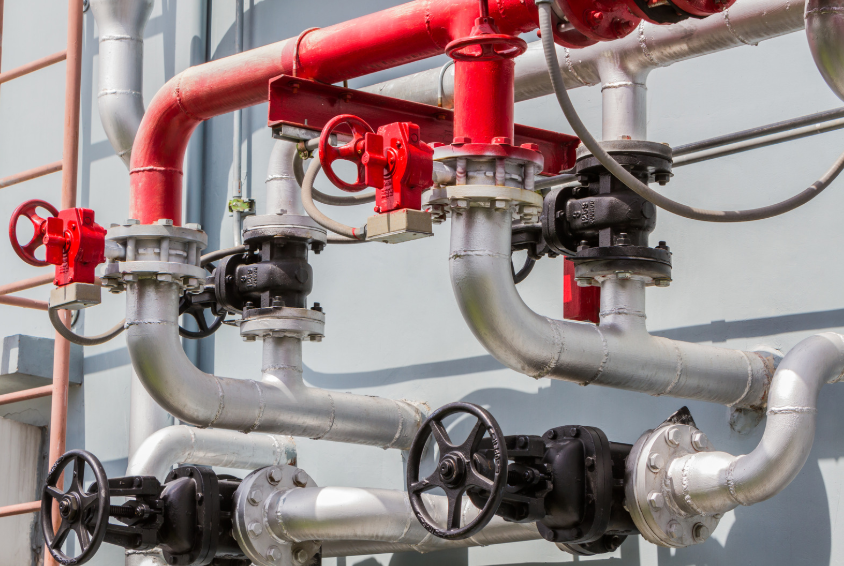Hot tapping & line stopping services for steel pipelines are vital methods used in maintaining and repairing pipelines without shutting down entire systems. These advanced techniques allow businesses to carry out essential maintenance while minimising disruption to their operations. This article will explore how these services not only reduce downtime but also ensure safety during pipeline operations, focusing specifically on steel pipelines, which are commonly used in critical industries like oil, gas, and water systems.
What is Hot Tapping & Line Stopping?
Hot tapping & line stopping services for steel pipelines involve two distinct but complementary techniques. Hot tapping refers to the process of creating a new branch connection to a pressurised pipeline without interrupting its flow, typically done with steel pipelines. Line stopping, on the other hand, involves inserting a mechanical device into the pipeline to temporarily block or isolate a section of it, enabling repairs or modifications to be carried out safely. Both services are crucial for maintaining the integrity of steel pipelines while keeping the system operational.
Why are Hot Tapping & Line Stopping Essential for Steel Pipelines?
Hot tapping & line stopping services for steel pipelines are indispensable because they allow operators to address issues without a complete shutdown of pipeline systems. Traditional methods often require halting operations, which can lead to significant downtime and lost revenue. By using hot tapping & line stopping, industries can ensure that their steel pipelines remain operational, even during maintenance, which is especially important for sectors like oil and gas, where downtime can be costly. These services are critical for ensuring the continuous flow of resources while addressing potential pipeline issues effectively.
Minimising Downtime with Hot Tapping & Line Stopping
One of the primary advantages of hot tapping & line stopping services for steel pipelines is their ability to minimise downtime. Unlike traditional shutdown methods that require complete system isolation, these services enable critical repairs or modifications to be done while the pipeline remains pressurised and in operation. This is especially beneficial in industries where continuous service is crucial. By using these methods, businesses can significantly reduce downtime, increase operational efficiency, and prevent costly production delays.
Ensuring Safety During Pipeline Maintenance
Safety is a top priority when it comes to hot tapping & line stopping services for steel pipelines. Both techniques are carried out with stringent safety protocols to ensure the protection of workers and the surrounding environment. Hot tapping, for instance, involves using specialized equipment to create a safe tapping point without causing pressure surges or leaks. Line stopping services for steel pipelines also employ advanced technologies to ensure that the isolation process is done correctly and safely. By following industry-standard safety measures and working with experienced technicians, these services help prevent accidents and maintain the integrity of the pipeline.
The Process: How Hot Tapping & Line Stopping are Conducted
The process of hot tapping & line stopping services for steel pipelines involves several steps to ensure precision and safety. In hot tapping, a valve is installed on the pressurised pipeline, and a cutting tool is used to create a new opening without disrupting the flow of material inside the pipeline. After the tap is made, the connection is safely secured, and operations can continue. In line stopping, a temporary mechanical device is inserted into the pipeline to stop the flow of material, allowing repairs or maintenance work to be performed without shutting down the entire system. Both methods are carried out by trained professionals who follow strict procedures to minimise risk.
Advantages of Hot Tapping & Line Stopping for Steel Pipelines
Hot tapping & line stopping services for steel pipelines offer numerous advantages. These methods help avoid full system shutdowns, ensuring continuous operation of pipelines, which is particularly beneficial in high-demand industries. They are also cost-effective and time-efficient, as they reduce the need for extensive downtime and the associated costs of restarting operations. Additionally, these services can prolong the lifespan of steel pipelines by reducing the need for invasive repairs, making them an ideal solution for maintaining pipeline systems with minimal disruption.
Common Applications of Hot Tapping & Line Stopping
Hot tapping & line stopping services for steel pipelines are widely used in a variety of applications. These services are commonly used to repair leaks in pipelines, add new connections or branches, and isolate sections of a pipeline for maintenance or inspection. In emergency situations, line stopping can temporarily isolate a problematic section of a pipeline, allowing the rest of the system to continue functioning while repairs are made. These applications are especially critical in industries such as oil, gas, and water, where the integrity of pipelines directly impacts safety and operational efficiency.
Challenges in Hot Tapping & Line Stopping Steel Pipelines
While hot tapping & line stopping services for steel pipelines are highly effective, they do come with certain challenges. For instance, steel pipelines that operate under extremely high pressures or temperatures may present additional risks during hot tapping or line stopping. Additionally, the complexity of working with steel pipelines can sometimes make these techniques more challenging compared to other materials. However, with proper training and the right equipment, these challenges can be overcome, ensuring that hot tapping & line stopping remain safe and efficient methods for pipeline maintenance.
Choosing the Right Service Provider for Hot Tapping & Line Stopping
When selecting a provider for hot tapping & line stopping services for steel pipelines, it is crucial to consider their experience, reputation, and expertise in handling such complex procedures. Look for companies that are certified and have a proven track record in ensuring both safety and efficiency. A reliable service provider will also be able to tailor their solutions to meet the specific needs of your pipeline system, providing custom services that ensure minimal downtime and maximum safety during operations.
Future Innovations in Hot Tapping & Line Stopping Technology
The future of hot tapping & line stopping services for steel pipelines looks promising, with ongoing innovations aimed at improving safety, efficiency, and environmental sustainability. Advanced technologies such as automated systems, real-time monitoring, and more precise cutting tools are making these services even more effective. As industries continue to demand faster and more efficient methods of pipeline maintenance, these innovations will play a crucial role in ensuring that hot tapping and line stopping remain key components in pipeline management strategies.
Takeaway
Hot tapping & line stopping services for steel pipelines are indispensable methods for maintaining the operational integrity of pipeline systems while minimising downtime and ensuring safety. These services are essential for industries that rely on continuous pipeline operations and need to carry out critical repairs or modifications. By choosing the right service provider and embracing technological advancements, businesses can ensure that their steel pipelines remain functional and safe for years to come.











